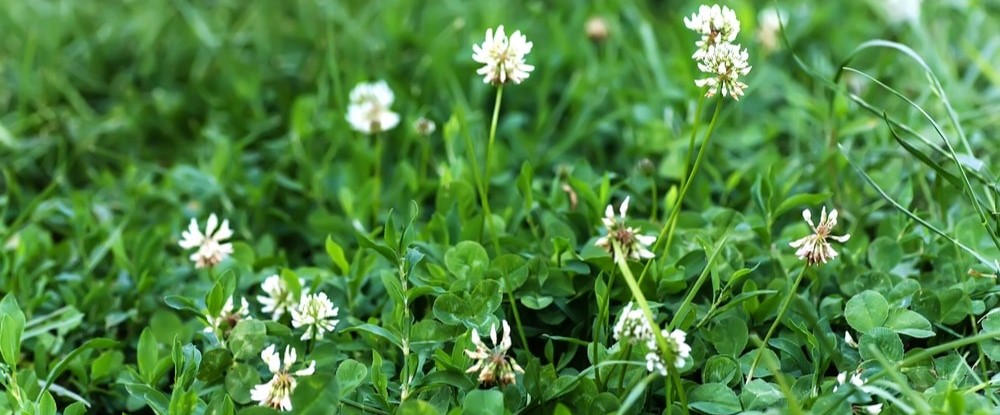
Why use clover?
Firstly, it requires less water than a traditional grass and is more environmentally friendly in that regard. Bacteria in its roots also allow for fixation of atmospheric nitrogen so it will enhance the soil’s nutrient availability. This means no fertilizer – an economic and environmental bonus. Clover is also more acid-tolerant than grass making it a great option under evergreens and in yards with pets.
The two popular clover choices are microclover and white Dutch clover. White Dutch clover grows about 6”-8” and will feature white clover bulbs that attract pollinators. Microclover may have some white flowers and can form a low-growing mat when mowed. It requires some agitation to get to that low-growing state, however a full microclover lawn won’t need much mowing to get there.
If overseeding grass, the seeding rate for white Dutch clover is one pound per 1000 ft2. One ounce of microclover will do around 400 ft2.
HOW TO GROW
Clover seeds like to be hydrated during their germination process. Planting in the spring can be ideal to ensure that they do not dry out and the spring rain can help to water it for you. Planting later into the summer may result in a poorer germination rate due to the hot weather.
Additionally, late-August to September present another opportunity to plant once the weather starts cooling down. Check with your local sources to see when the first expected frost date will be to ensure that the seeds will have enough time to grow beforehand. If this is a concern, you may consider planting some in the fall with a plan to reseed in the spring.
If you have decided to overseed your lawn, a great option is pulling out weeds and putting clover into these soil-exposed spots. This makes it easy to start introducing clover into your lawn. If you have yellow, dead, or weed-littered patches of your lawn. The best option is to rake out the material and cover with a light layer of topsoil before seeding the clover.
If you are starting your lawn from scratch, you may be considering a grass-clover mix. It is best to seed them separately due to different planting requirements. Grass likes to be raked into the soil or covered by a thin layer of topsoil. Meanwhile, clover does not like to be buried but instead make good surface contact with the soil. A good option is to spread your grass seed as usual, and then clover after.
If you have to cover a large area and are using a seeder, the low quantity of clover seed may make it difficult to do so. A filler like sand can be helpful when using a hand or broadcast seeder.
Once again, make sure that the area in which you’ve planted your clover stays hydrated for the first week (or two) while it germinates
By Julia Bowen
